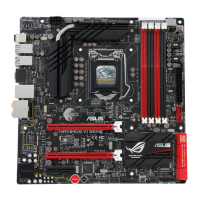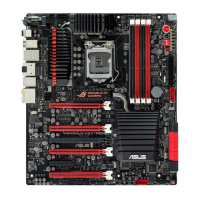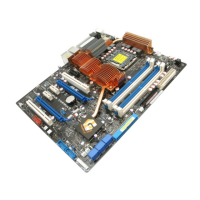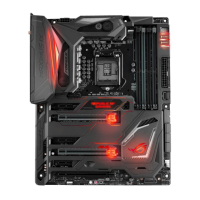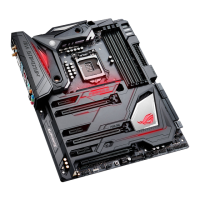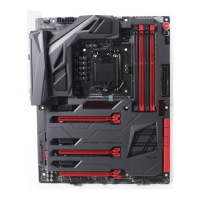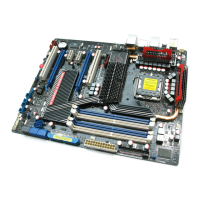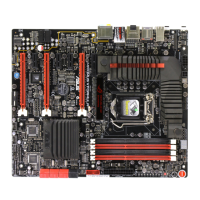
 Loading...
Loading...
Do you have a question about the Asus Maximus V Formula and is the answer not in the manual?
| ECC | No |
|---|---|
| Non-ECC | Yes |
| Memory channels | Dual-channel |
| Memory slots type | DIMM |
| Number of memory slots | 4 |
| Supported memory types | DDR3-SDRAM |
| Maximum internal memory | 32 GB |
| Supported memory clock speeds | 1066, 1333, 1600, 1866, 2133, 2200, 2400, 2600, 2666, 2800 MHz |
| Supported memory module capacities | 1GB, 2GB, 4GB, 8GB |
| System bus rate | 5 GT/s |
| Processor socket | LGA 1155 (Socket H2) |
| Processor manufacturer | Intel |
| Compatible processor series | Intel Core i3, Intel Core i5, Intel Core i7 |
| Maximum number of SMP processors | 1 |
| USB 2.0 connectors | 2 |
| Number of SATA connectors | 10 |
| Number of SATA III connectors | 6 |
| Number of Parallel ATA connectors | 0 |
| I/O ports | 2x RCA 1x USB 2.0 2x 3.5mm 1x 2.5mm |
| Manageability features | WfM2.0, DMI2.0, WOL by PME, PXE |
| HDMI version | 1.4a |
| Headphone outputs | 5 |
| USB 2.0 ports quantity | USB 2.0 ports have a data transmission speed of 480 Mbps, and are backwards compatible with USB 1.1 ports. You can connect all kinds of peripheral devices to them. |
| Cooling type | Passive |
| Component for | PC |
| Power source type | ATX |
| Motherboard chipset | Intel Z77 |
| PC health monitoring | CPU, FAN, Temperature |
| Audio output channels | 7.1 channels |
| Motherboard form factor | Extended ATX |
| RAID levels | 0, 1, 5, 10 |
| Supported storage drive interfaces | SATA, SATA II, SATA III |
| Graphics card | HD Graphics |
| OpenGL version | 4.2 |
| DirectX version | 11 |
| Maximum resolution | 2560 x 1600 pixels |
| Parallel processing technology support | 2-Way CrossFireX, 2-Way SLI, 3-Way CrossFireX, LucidLogix Virtu |
| PCI Express x16 slots | 3 |
| PCI Express slots version | 2.0, 3.0 |
| PCI Express configurations | 1x16, 2x8 |
| Cables included | SATA |
| Wi-Fi standards | 802.11a, 802.11b, 802.11g |
| Bluetooth version | 4.0 |
| Networking features | Gigabit LAN |
| Ethernet interface type | Fast Ethernet, Gigabit Ethernet |
| BIOS type | EFI AMI |
| ACPI version | 2.0a |
| BIOS memory size | 64 Mbit |
| Depth | 257 mm |
|---|---|
| Width | 305 mm |
Precautions to prevent electrical shock hazards during system operation and maintenance.
Guidelines for safe handling and operation of motherboard components and the system.
Details CPU socket, chipset, memory support, and expansion slots.
Highlights unique features and technologies of the motherboard.
Provides a general overview of the motherboard's layout and components.
Guides the initial steps of building a PC, including component installation.
Explains how to update the BIOS using the USB BIOS Flashback feature.
Guides the initial system startup procedure and explains BIOS beep codes.
Guides on how to enter and navigate the BIOS setup program.
Details the menu for configuring overclocking-related items.
Allows changing settings for the CPU and other system devices.
Provides instructions and warnings for updating the motherboard BIOS.
Overview of applications and utilities provided on the support DVD.
Utility for managing, saving, and updating the motherboard BIOS in Windows.
Details motherboard support for SATA RAID solutions.
Details entering and using the Intel RAID utility.
Explains the requirement and process for creating a RAID driver disk.
Guides installing and configuring AMD CrossFireX for multi-GPU setups.
Guides installing and configuring NVIDIA SLI for multi-GPU setups.
Allows better graphics performance via GPU virtualization.
Details Intel responsiveness technologies: Smart Response, Rapid Start, Smart Connect.
Boosts system performance using SSD as a cache.
Allows quick computer resume from sleeping mode using SSD.
Guides connecting various devices to the ThunderFX.
Introduces the ThunderFX Audio utility and its functions.
